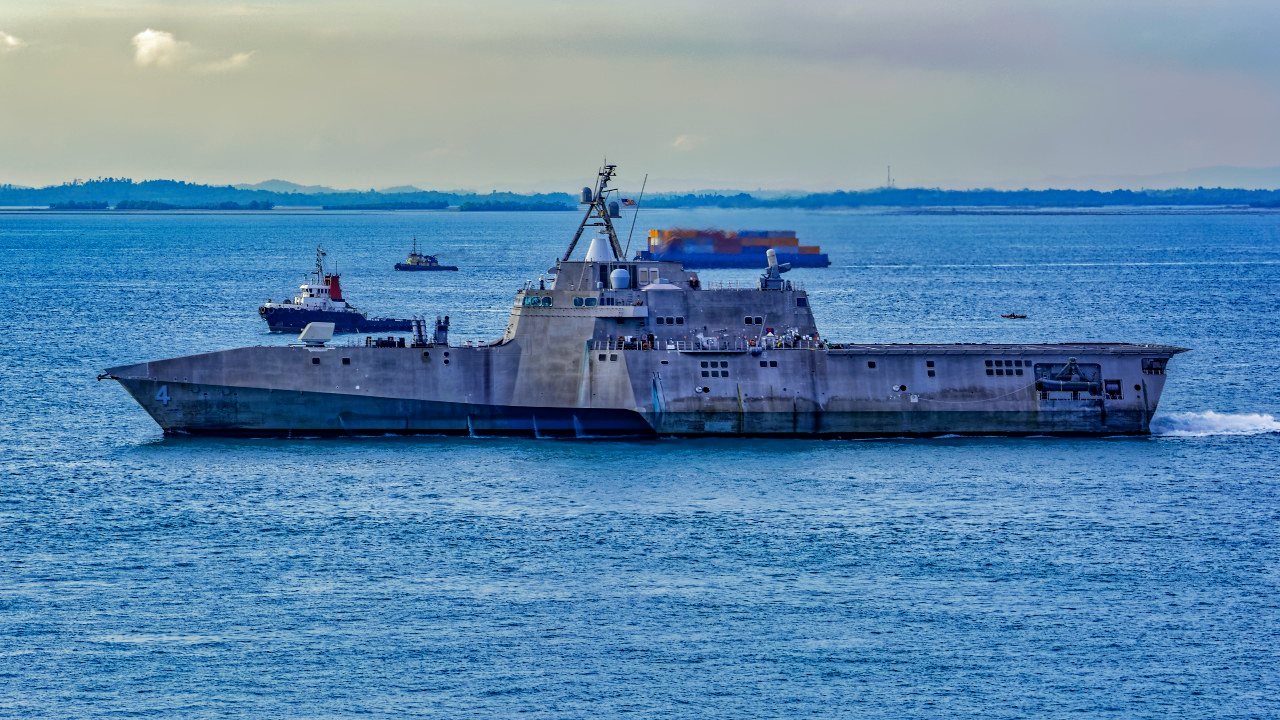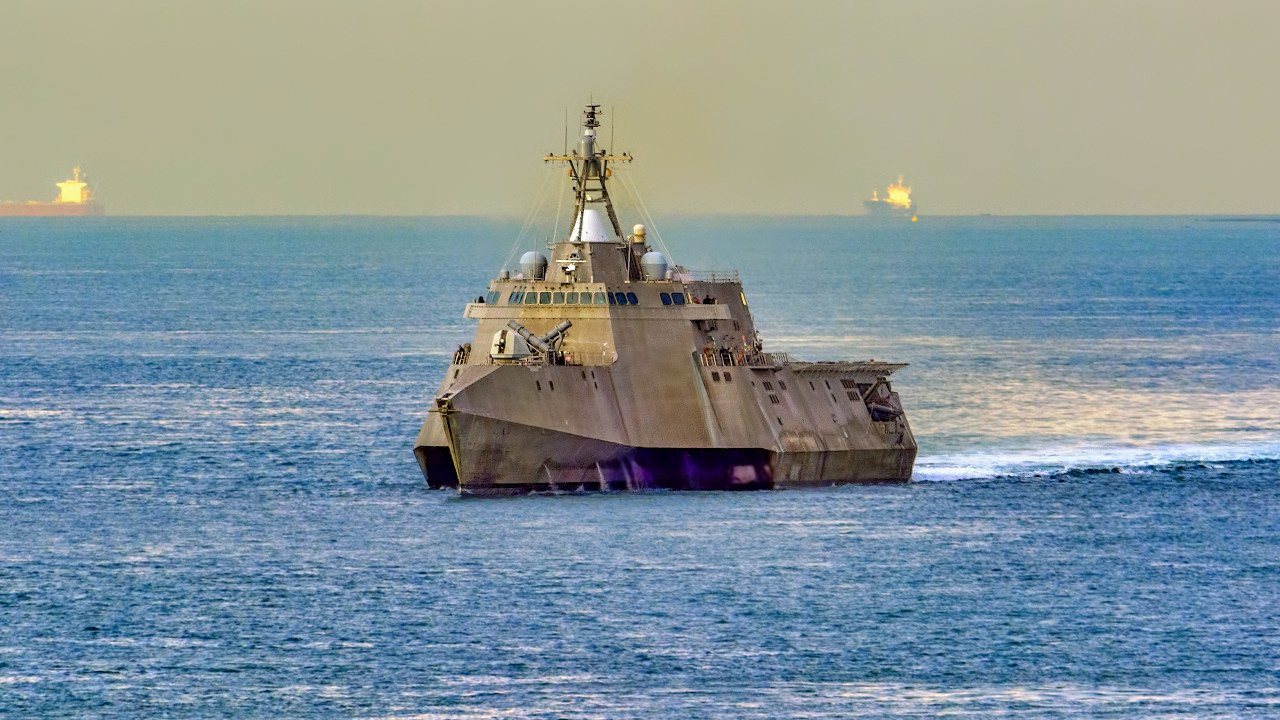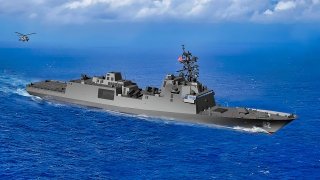The Navy's Constellation-Class Frigate Nightmare Is Just Very Real
The delivery of the U.S. Navy’s new Constellation-class frigate, FFG-62, is expected to be delayed until 2029, three years behind schedule. This setback is part of broader delays affecting other critical naval projects like the Columbia-class submarines and Virginia-class Block V subs.
The U.S. Navy’s upcoming Constellation-class frigate will likely be delayed by three years. The Constellation (FFG-62) might not be delivered to the fleet until 2029.
This news was publicized as part of a forty-five-day shipbuilding study ordered by the secretary of the Navy earlier this year. The Constellation is not the only vessel behind schedule—the lead boat of the Columbia class of ballistic missile nuclear-powered submarines and the latest Virginia-class Block V subs are also failing to meet deadlines. As tensions grow between Washington and Beijing, the timely arrival of these critical warships should be a priority.
Naval Sea Systems Command chief Vice Admiral James Downey said the design plan for the new frigate is not finished. The Constellation borrows heavily from manufacturer Fincantieri Marinette Marine’s FREMM, a frigate design in service with the French and Italian navies, but its design is only 80 percent complete. “Some of the mix of the contracting roles have changed between prime and sub,” Downey told reporters. “And finishing the design has been critical for us. That’s why we’ve co-located the design force from Fincantieri and their sub with the government in a collaboration center up there to finish.”
Introducing the Constellation-Class
In the last decade, the Navy has prioritized designs for frigates that can be modified with new technologies down the line. Specifically, the service sought a frigate class that could keep up with aircraft carriers and be equipped with sensors. Six shipbuilders submitted initial design plans in 2018 to fulfill this need. The Navy awarded five of these manufacturers $15 million contracts to produce design prototypes for the frigate—Austal USA, Huntington Ingalls Industry, Fincantieri Marine Group, Lockheed Martin, and General Dynamics. Fincantieri’s design was selected as the winner in 2020, and the shipbuilder was awarded a contract of almost $800 million to continue its efforts.
Specs & Capabilities
According to reports, the new class of frigates will equip an Enterprise Air Surveillance Radar, Baseline Ten AEGIS Combat System, an MK 41 Vertical Launch System (VLS), and the Mk 110 57mm Gun Weapon System. Each warship will measure just under 500 feet in length and have an eighteen-foot beam. Roughly 200 crew members can be supported onboard. The frigates will reach a top speed of 26 knots in the water, powered by a combined diesel-electric propulsion.
The Constellation-class ships will be able to carry cruise, guided, anti-ship, and rolling airframe missiles, in addition to automatic naval guns, surveillance radar, VLS, and advanced electronics. The Navy recently incorporated its first combat systems software package for the lead ship of the Constellation-class. This Aegis Weapon System Baseline 10 variant has been specially modified to serve the needs of these frigates.

Lockheed Martin describes the software:
“The CSL supports a number of the Surface Navy’s platforms, including Aegis Cruisers and Destroyers, Littoral Combat Ships, Coast Guard Cutters, and International Aegis-equipped Allies. The CSL also reduces the Navy’s costs through common software development, systems engineering, and training. As the U.S. Navy’s Combat System Engineering Agent (CSEA) for the Aegis Combat System, we delivered the first Frigate BL10 software delivery by combining the best of existing Navy programs, the adaptability of the CSL, and advances in CSEA technology to bring a custom product to the Navy’s newest Surface ship class.”
What about the Navy’s LCS program?
Failures in the Navy’s littoral combat ship (LCS) program are informing the Constellation program.

The LCS was plagued by development issues, acquisition adjustments, and poor performance – the ships never lived up to their potential. In order to steer wide of further failures, the Navy is requiring that the new frigate class’ propulsion system be tested on land to reduce the risk of engine failure.

Whatever the Constellation-class’ merits, the ships will be of little avail if war breaks out and they haven’t been built yet.
About the Author
Maya Carlin, National Security Writer with The National Interest, is an analyst with the Center for Security Policy and a former Anna Sobol Levy Fellow at IDC Herzliya in Israel. She has by-lines in many publications, including The National Interest, Jerusalem Post, and Times of Israel. You can follow her on Twitter: @MayaCarlin.
Images: U.S. Navy.


